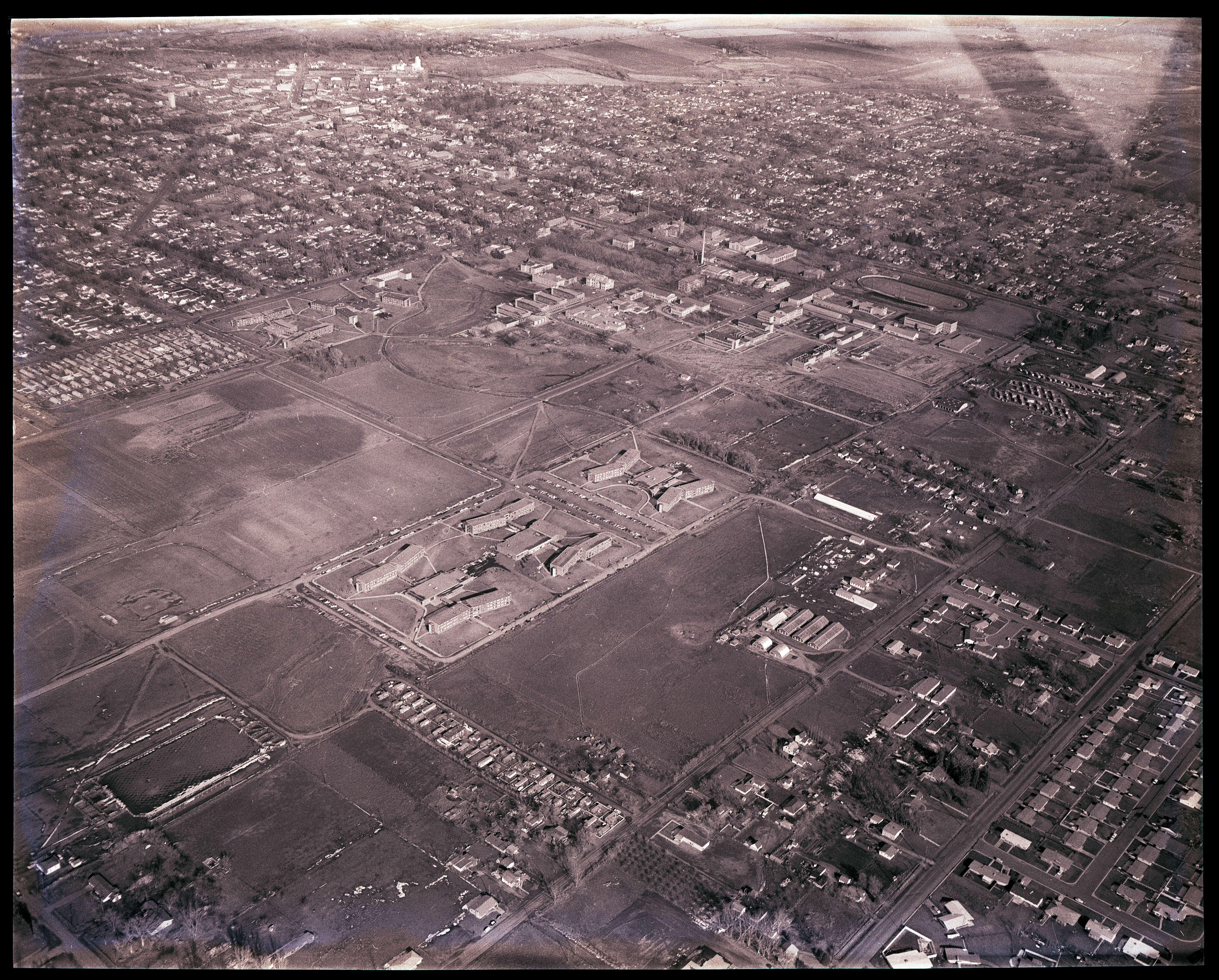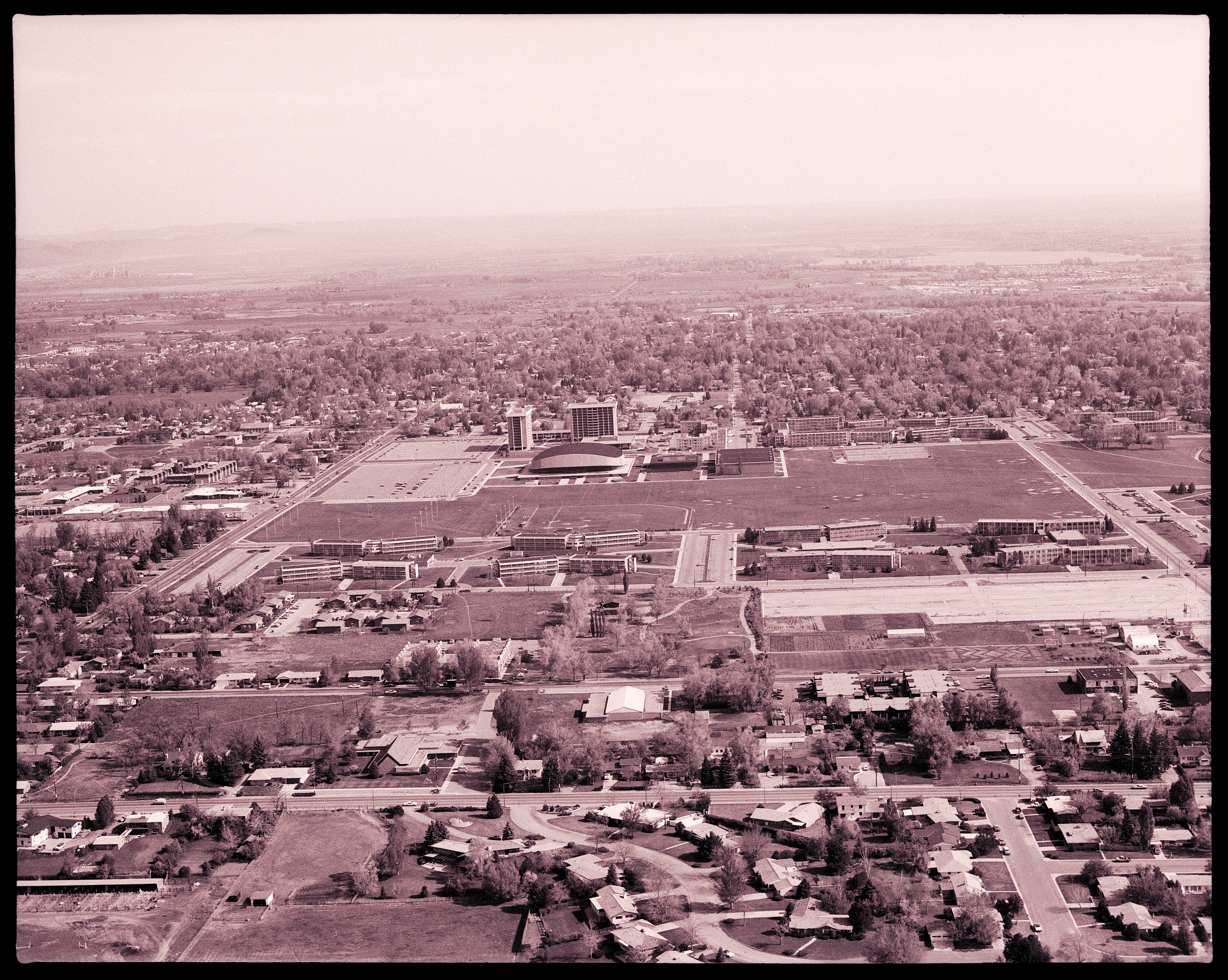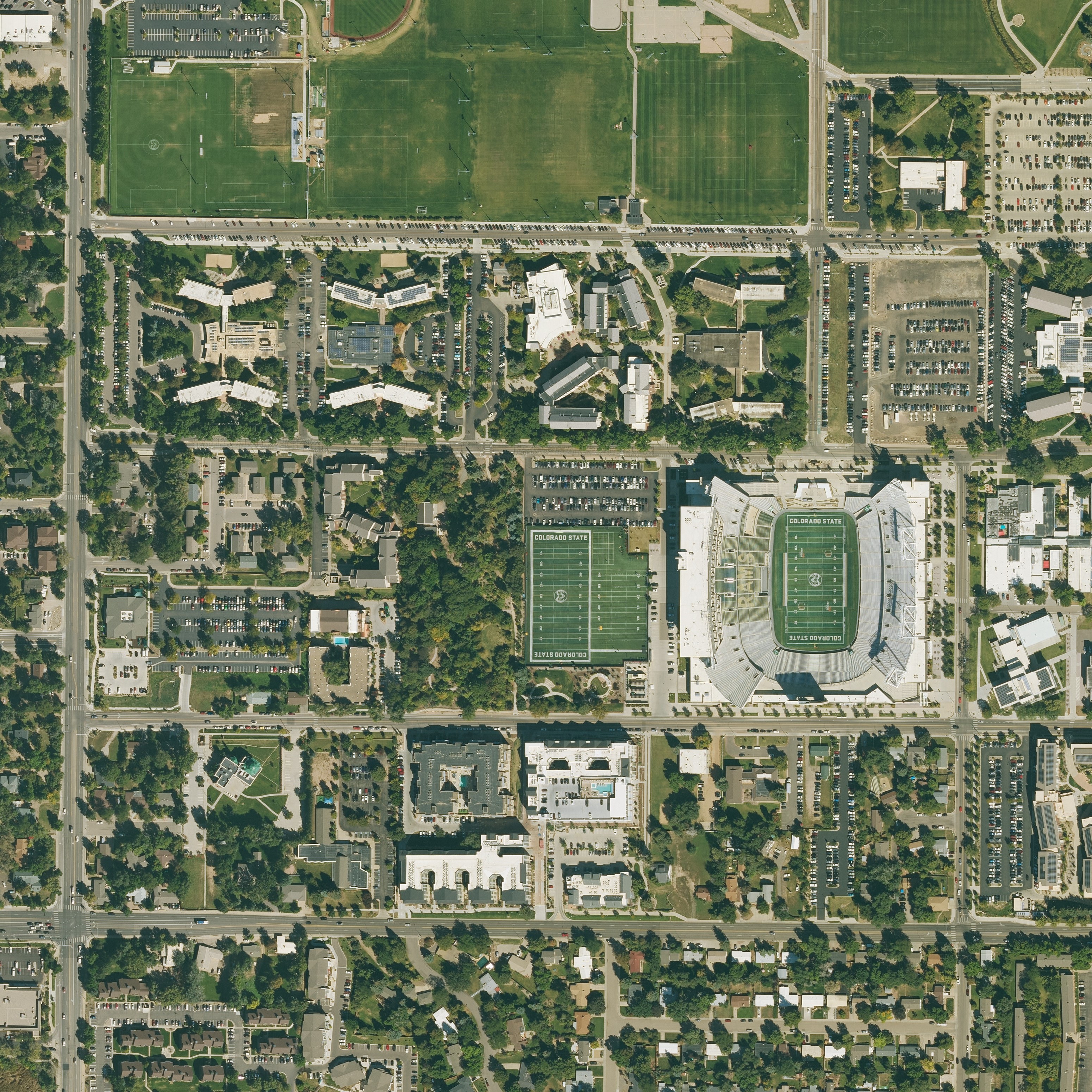History
In 1973, the State Board of Agriculture, the University’s governing body at the time, agreed to close the CSU Trailer Court at 850 W Lake St. With the student population growing quickly after World War II, the trailer court had been created in 1953 for married veterans, but the amount of student housing had improved in subsequent years, reducing the need for temporary, affordable homes. Like others settling in the area, the trailer court residents had planted many fast-growing trees, especially Siberian elm (Ulmus pumila), to provide shade, and the trees had quickly grown to provide dense cover in just a few decades. In its decision, the Board offered the same two acres to the nearby W.D. Holley Plant and Environmental Research Center (PERC), a facility managed by the Department of Horticulture, and Dr. Bert Swanson petitioned for the development of a new woody plant collection on the grounds.
With an intent to trial a wide variety of trees for the area, the department started planning and preparing for a new arboretum. Initially, the arboretum landscape was organized by grouping plants in botanical families. The design, common in the 19th Century, usually encouraged comparisons along a pathway showing increasing biological development, but the arrangement was largely chosen as a simple organizing principle allowing students and visitors to learn about trees in related plantings. With the design established, staff, students, and other volunteers made some initial improvements to the grounds, including a new maintenance building and driveways, and a local Army reserve unit helped for several weekends with grading work to create subtle mounds and surface drainage.
In 1978, students and other volunteers installed the first large batch of new trees, and they were progressively added to the arboretum’s collection records. The labeling system developed at the time assigned a unique identifier to individual trees for tracking, and it is still largely used today with just a few changes. By the end of 1978, nearly 200 new trees were added to the new collection. Although many are still growing in the arboretum today, several died, including a Franklin tree (Franklinia alatamaha) and dove tree (Davidia involucrata) from the U.S. National Arboretum.
Over subsequent years, the woody plant collection gradually developed with plant material donated by many nurseries, botanic gardens, and universities. Although the number of new trees each year declined as the arboretum filled, over 4,000 distinct varieties of trees and shrubs were planted and evaluated in the first 30 years. By regularly monitoring the collection, CSU faculty and staff identified some of the most dependable woody plants for use in regional landscapes, and the recommendations were regularly shared with the green industry and broader public.
For nearly 50 years, the arboretum has remained committed to its basic purpose amid significant change. Between 1940 and 2000, the developed area of Fort Collins has grown over 6.5 times and hosted a ten-fold increase in the resident population, like many other areas along the Front Range. With similar growth on the CSU campus, the land around the arboretum gradually developed into new housing and athletics facilities, and the other parts of PERC, including the greenhouses and trial gardens, progressively moved to other locations on campus. Today, the arboretum is a place for anyone to study and observe trees commonly found in the region and discover unusual trees suited for western communities. As a special campus green space, it is also a place for people to relax, socialize, and enjoy the outdoors. Looking forward, we hope you will be a part of our story celebrating the unique and special relationship between trees and people.
Resources
Cashman, R. 1979. Wood (sic) plant area taking shape. The Coloradoan. April 1978.


